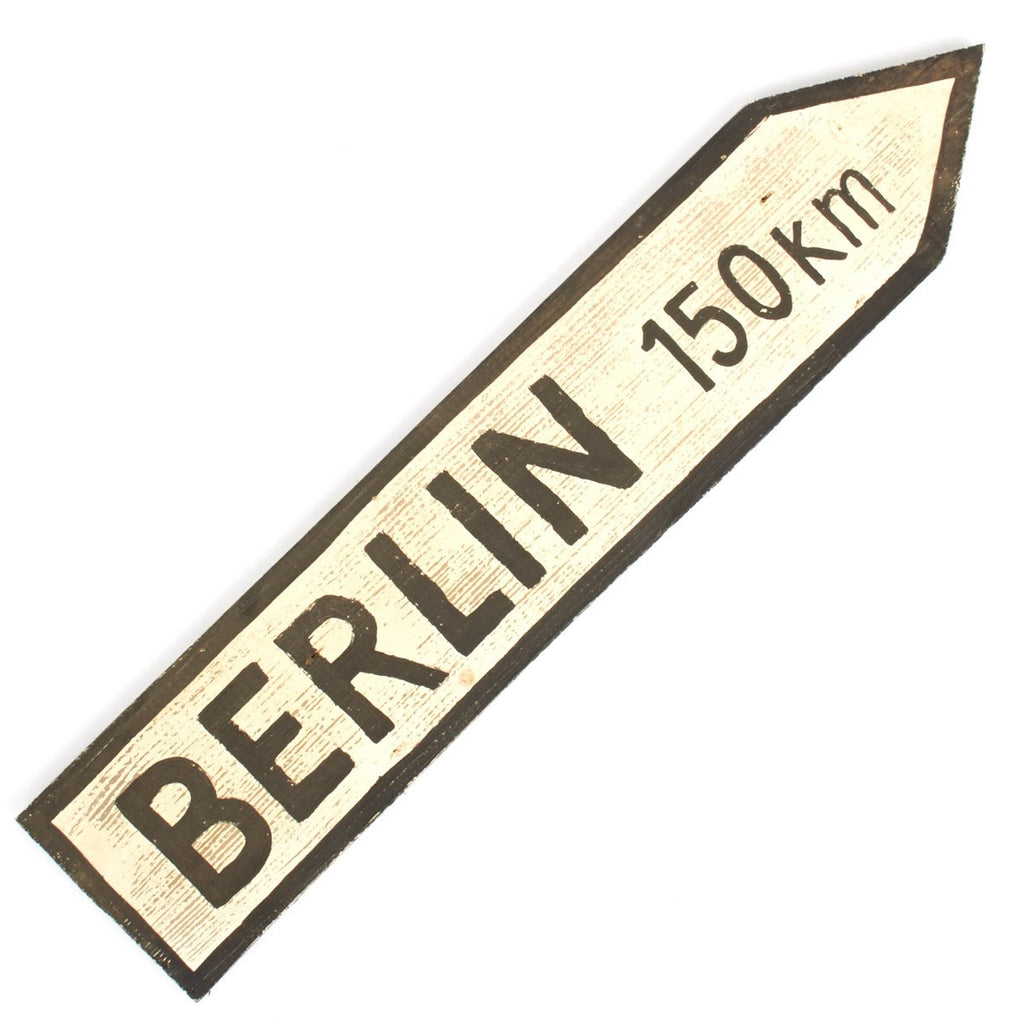Item Description
New Made Item: Constructed out of genuine antique wood used from WW2 machine gun and ammunition boxes these are newly made hand painted signs made as faithful reproductions of road signs used by the Allies to mark the routes and distances to specific cities and important locations.
Every sign is unique and hand crafted so will vary slightly. Typical measurements are 15 to 25 in length by 4-6 in width. These are painted to order, so they may not be available for same day shipping.
After the Allies agreed at Yalta to specific zones of influence within Germany, the two Soviet armies raced to win control of Berlin, perhaps motivated by a desire to gain control of the German nuclear research program in the Kaiser Wilhelm Institute before the Americans.
The western front
Since the Allies landed in Normandy, the British and American armies (among affiliated Western Allied forces) had both moved swiftly and decisively to take western cities in France, and to move on to liberate Paris. By September 1944, Allied forces had reached the German border, but the subsequent failure of Operation Market Garden and the ensuing deadlock handed the initiative to Germany for a brief period. In December, AH launched a bold but ultimately unsuccessful offensive which is known as the Battle of the Bulge. In March 1945, the Allies crossed the Rhine in a decisive manner, but the enormous casualties taken by Allied forces in the Ardennes in the previous months and the still significant distance to Berlin dampened Eisenhower's drive to take Berlin before the Soviets.
Final moves by the western Allies
General Eisenhower's Armies were facing resistance that varied from almost non-existent to fanatical[3] as they advanced toward Berlin, which was located 200 km (120 mi) from their positions in early April 1945. Britain's Prime Minister, Winston Churchill, urged Eisenhower to continue the advance toward Berlin by the 21st Army Group, under the command of Field Marshal Montgomery with the intention of capturing the city. Even General George S. Patton agreed with Churchill that he should order the attack on the city since Montgomery's troops could reach Berlin within three days. The British and Americans contemplated an airborne operation before the attack. In Operation Eclipse, the 82d Airborne Division, 101st Airborne Division, and a British brigade were to seize the Tempelhof, Rangdor, Gatow, Staaken, and Oranienburg airfields. In Berlin, the Reichsbanner resistance organization identified possible drop zones for Allied paratroopers and planned to guide them past German defenses into the city
After General Omar Bradley warned, however, that capturing a city located in a region that the Soviets had already received at the Yalta Conference might cost 100,000 casualties, by mid-April Eisenhower ordered all armies to halt when they reached the Elbe and Mulde Rivers, thus immobilizing these spearheads while the war continued for three more weeks. 21st Army Group was then instead ordered to move northeast toward Bremen and Hamburg. While the U.S. Ninth and First Armies held their ground from Magdeburg through Leipzig to western Czechoslovakia, Eisenhower ordered three Allied field armies (1st French, and the U.S. Seventh and Third Armies) into southeastern Germany and Austria. Advancing from northern Italy, the British Eighth Army pushed to the borders of Yugoslavia to defeat the remaining Wehrmacht elements there. This later caused some friction with the Yugoslav forces, notably around Trieste.
- This product is available for international shipping.
- Eligible for all payments - Visa, Mastercard, Discover, AMEX, Paypal & Sezzle





